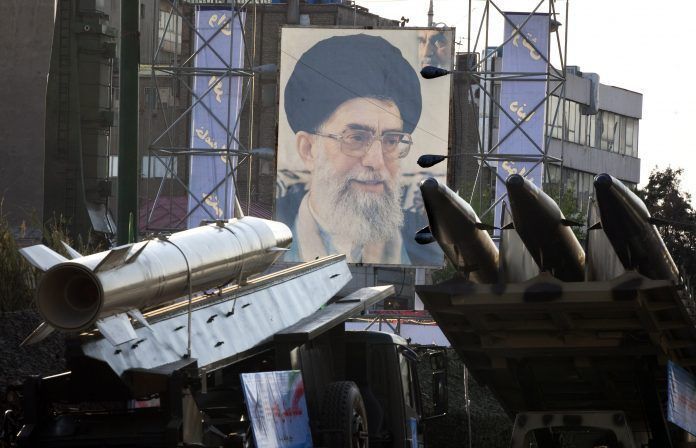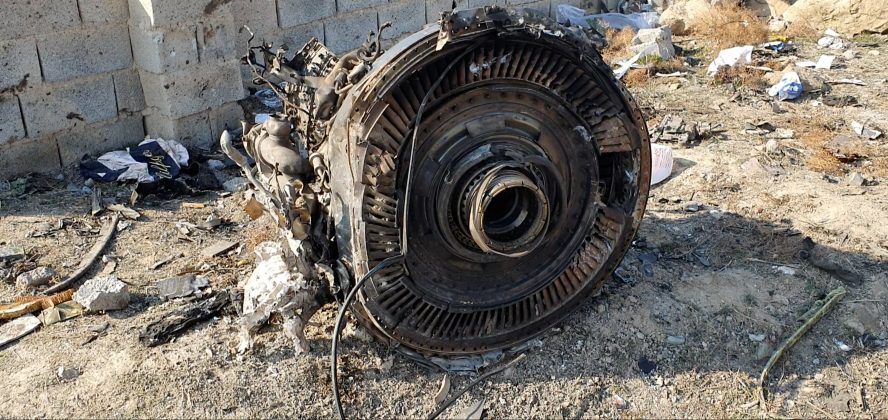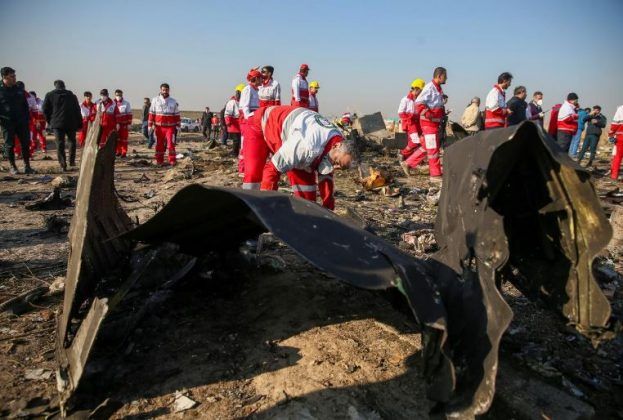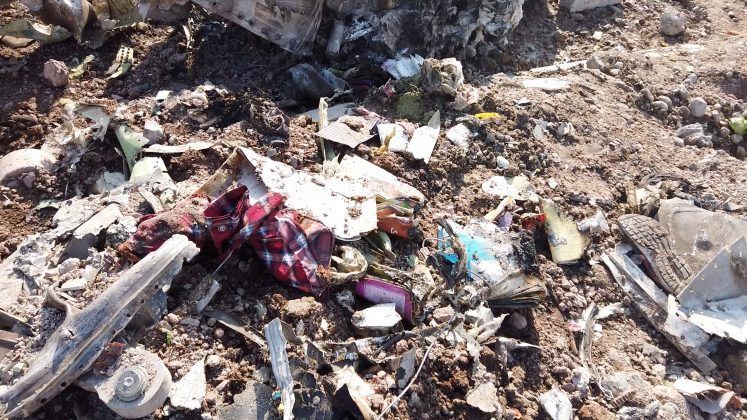
By Babak Dehghanpisheh and Alexander Cornwell
DUBAI, Jan 11 (Reuters) – Iran said on Saturday its military had mistakenly shot down a Ukrainian plane killing all 176 aboard, saying air defences were fired in error while on high alert in the tense aftermath of Iranian missile strikes on U.S. targets in Iraq.
Iran had previously vigorously denied bringing the plane down. Supreme Leader Ali Khamenei, who until Saturday had kept silent about the crash, said information should be made public.
[aesop_image img=”https://kayhanlife.com/wp-content/uploads/2020/01/2020-01-10T032252Z_872281735_RC2RCE9KB1PB_RTRMADP_3_IRAN-CRASH-MISSILES-scaled.jpg” panorama=”off” credit=”FILE PHOTO: The Tor-M1 anti-aircraft defense system is displayed in a military parade to commemorate the anniversary of the start of the 1980-1988 Iran-Iraq war, in Tehran. REUTERS./” align=”center” lightbox=”off” captionsrc=”custom” captionposition=”left” revealfx=”off” overlay_revealfx=”off”]
Wednesday’s crash heightened international pressure on Iran after months of friction with the United States and tit-for-tat attacks. A U.S. drone strike had killed a top Iranian military commander in Iraq on Jan. 3, prompting Tehran to fire at U.S. targets on Wednesday.
Canada, which had 57 citizens on board, and the United States had both said they believed an Iranian missile brought down the aircraft, although they said it was probably an error.
“The Islamic Republic of Iran deeply regrets this disastrous mistake,” Iranian President Hassan Rouhani wrote on Twitter, promising that those behind the incident would be prosecuted. “My thoughts and prayers go to all the mourning families.”
Experts said mounting international scrutiny would have made it all but impossible to hide signs of a missile strike in any investigation and Iran may have felt a U-turn was better than battling rising criticism abroad and growing grief and anger at home, as many victims were Iranians with dual nationality.
In Twitter messages, angry Iranians asked why the plane was allowed to take off with tensions in Iran so high. The plane came down when Tehran was on alert for U.S. reprisals in the hours after Iran launched rockets at U.S. troops in Iraqi bases.
Iran’s Revolutionary Guards apologised to the nation and accepted full responsibility. Senior Guards commander Amirali Hajizadeh said he wished “I could die” when he heard the news about the incident, state media reported.
Responding to Iran’s announcement on Saturday, Ukraine demanded an official apology and compensation. Canadian Prime Minister Justin Trudeau said he would work “to ensure a complete and thorough investigation” and wanted Iran’s full cooperation.
Iranian Foreign Minister Mohammad Javad Zarif wrote on Twitter that “human error at time of crisis caused by U.S. adventurism led to disaster”, citing an initial armed forces investigation into the crash of the Boeing 737-800.
[aesop_image img=”https://kayhanlife.com/wp-content/uploads/2020/01/2020-01-10T182959Z_1309655875_RC26DE9LFIMV_RTRMADP_3_IRAN-CRASH-scaled.jpg” panorama=”off” credit=”General view of the debris of the Ukraine International Airlines, flight PS752, Boeing 737-800 plane that crashed after take-off from Iran’s Imam Khomeini airport, on the outskirts of Tehran, Iran. REUTERS./” align=”center” lightbox=”off” captionsrc=”custom” captionposition=”left” revealfx=”off” overlay_revealfx=”off”]
TELL-TALE SIGNS
A military statement said the plane flew close to a sensitive military site of the elite Revolutionary Guards. At the time, planes had been spotted on radar near strategic sites leading to “further alertness” in air defences.
Ukraine has said the plane was in a normal flight corridor.
Experts said a probe would almost certainly have revealed tell-tale signs on the fuselage remains of a missile strike.
“There’s nothing you can do to cover it up or hide it,” said Anthony Brickhouse, an air safety expert at Embry-Riddle Aeronautical University and former U.S. National Transportation Safety Board investigator. “Evidence is evidence.”
Former U.S. Federal Aviation Administration accident investigator, Mike Daniel, told Reuters the mounting evidence made it inevitable that Iran would “accept culpability”.
The White House did not immediately respond to a request for comment.
Mobile phone footage posted and circulated by ordinary Iranians on Twitter after the crash had indicated the plane came down in flames and exploded as it struck the ground.
Aviation experts said Iran and the airline would have to explain why the plane was allowed to take off, as it is up to a country to close its airspace when there is a security risk, while many other airlines were already avoiding Iranian airspace.
PUBLIC GRIEF
Iran’s initial denials this week had described accusations that a missile was to blame as “psychological warfare”.
Grief-stricken Iranians complained on social media that Iran’s authorities had spent more time fending off criticism than sympathising with victims’ families.
“Why were any civilian airlines flying out of Tehran airport in those conditions?” Twitter user Shiva Balaghi wrote.
A U.S. official had said data showed the plane airborne for two minutes after departing Tehran when heat signatures of two surface-to-air missiles were detected. There was an explosion in the vicinity and heat data showed the plane on fire as it fell. U.S. military satellites detect infrared emissions from heat.
U.S. President Donald Trump said this week that “somebody could have made a mistake.”
Iran had said on Thursday it would download the information from voice and flight data recorders, known as black boxes, to determine what had happened, although it had said the process could take one to two months.
Tehran had said it could ask Russia, Canada, France or Ukraine for help in the investigation.
The disaster had echoes of an incident in 1988, when the U.S. warship USS Vincennes shot down an Iranian airliner, killing 290 people. Washington said it was a tragic accident. Tehran said it was intentional.
(Reporting by Babak Dehghanpisheh, Parisa Hafezi and Alexander Cornwell in Dubai, Steve Holland in Washington and Allison Lampert Writing by Edmund Blair Editing by Jacqueline Wong and Frances Kerry)






